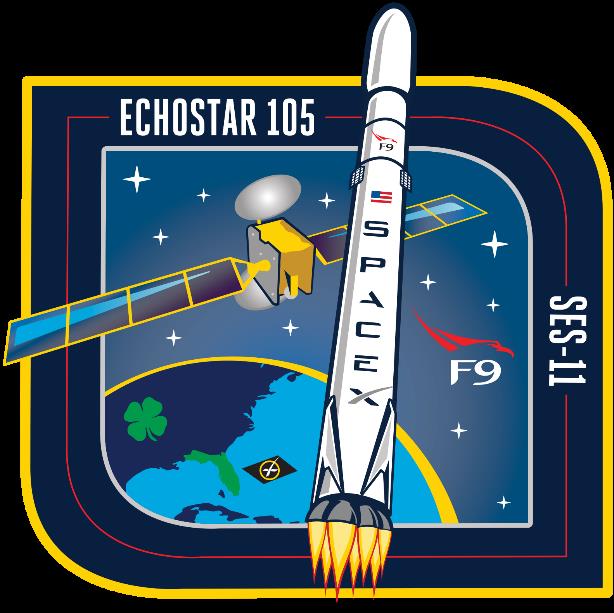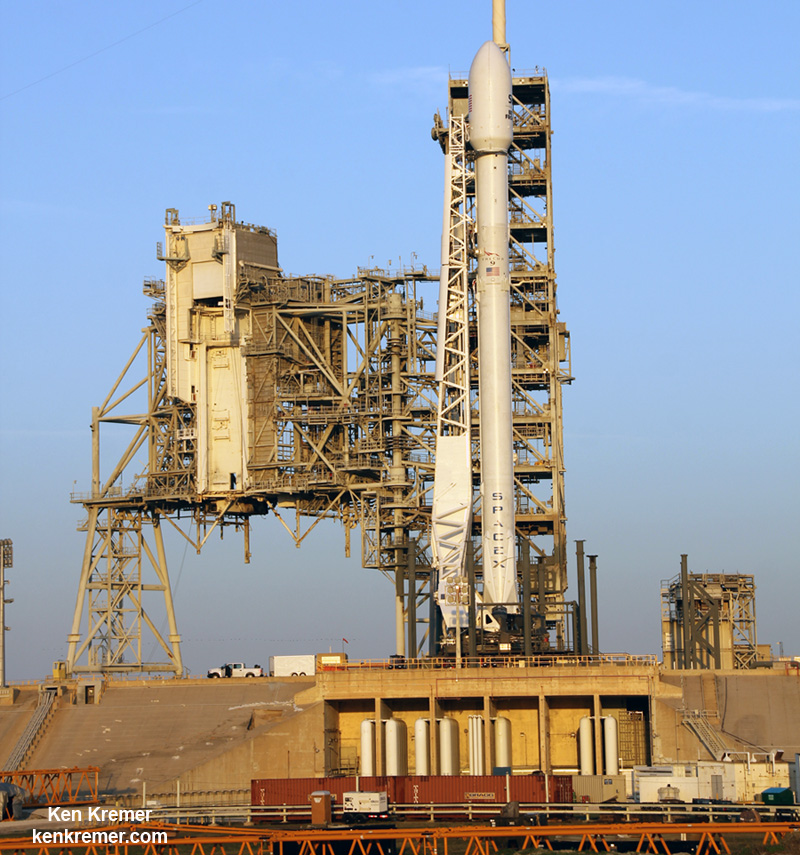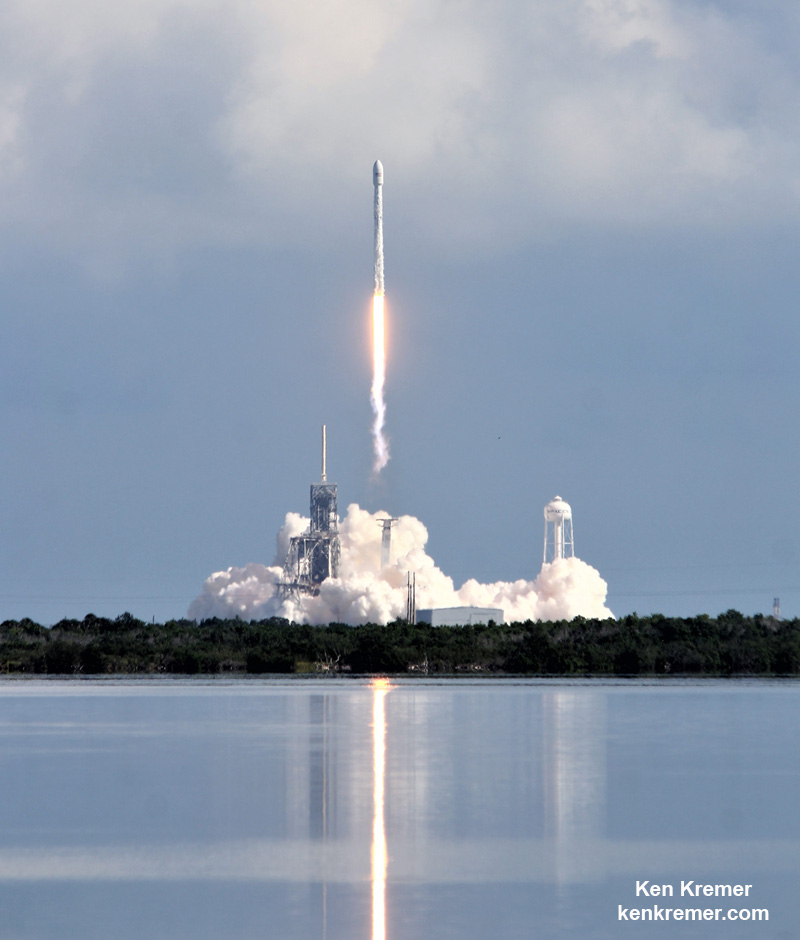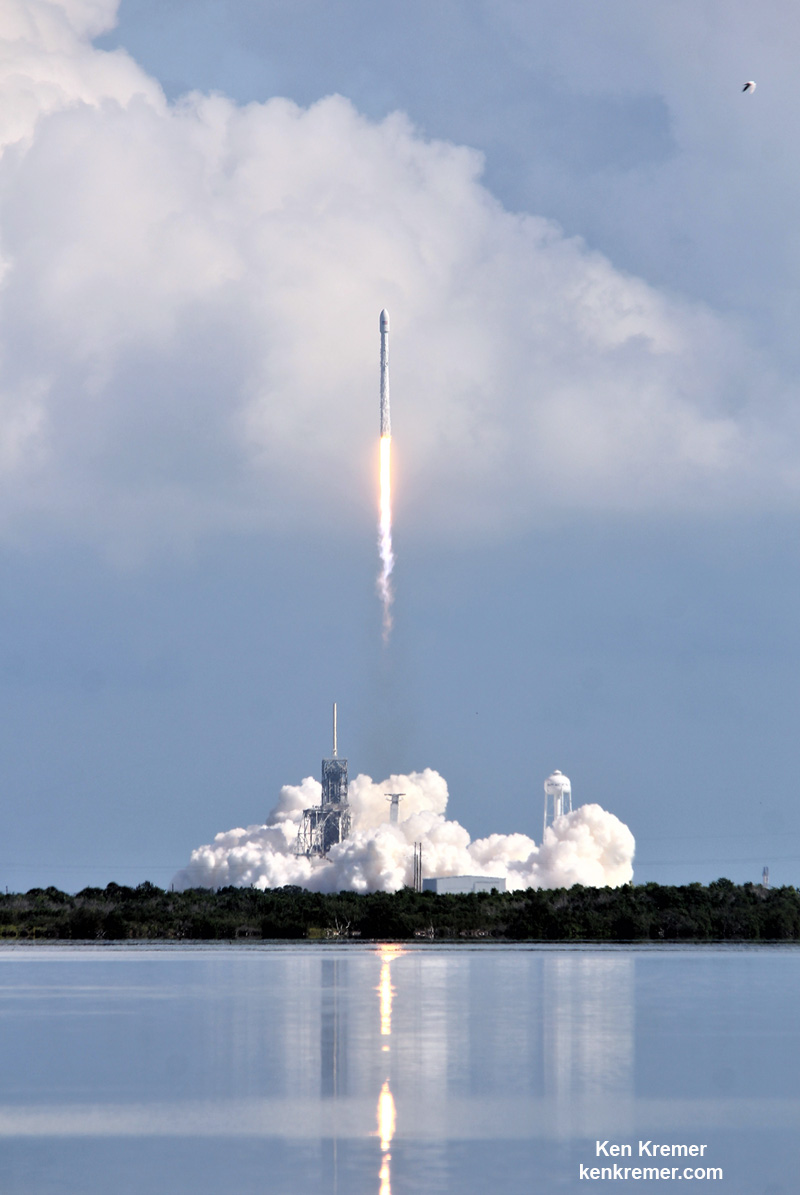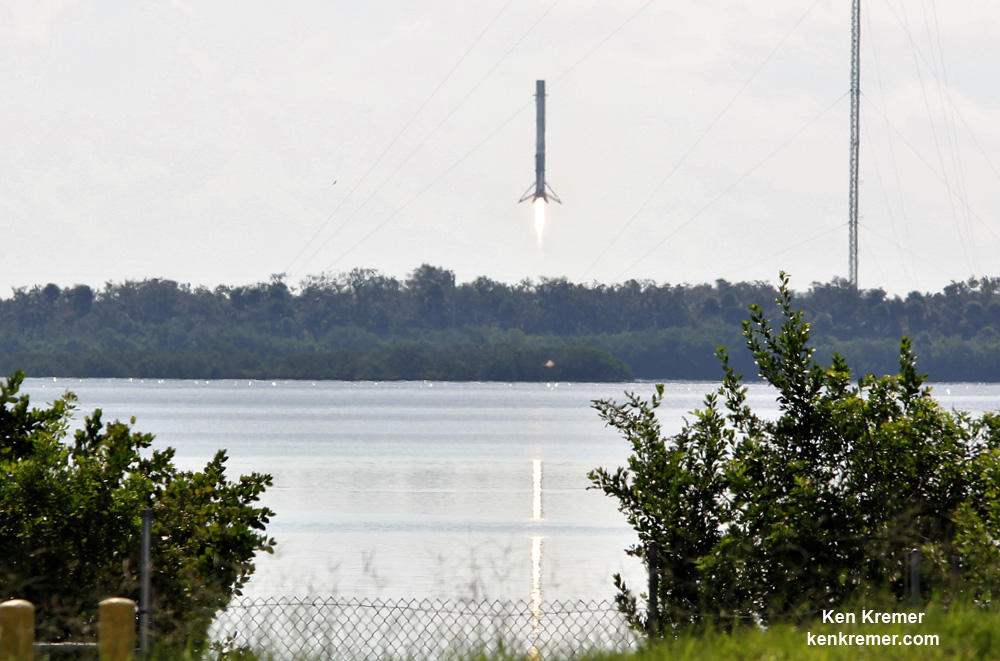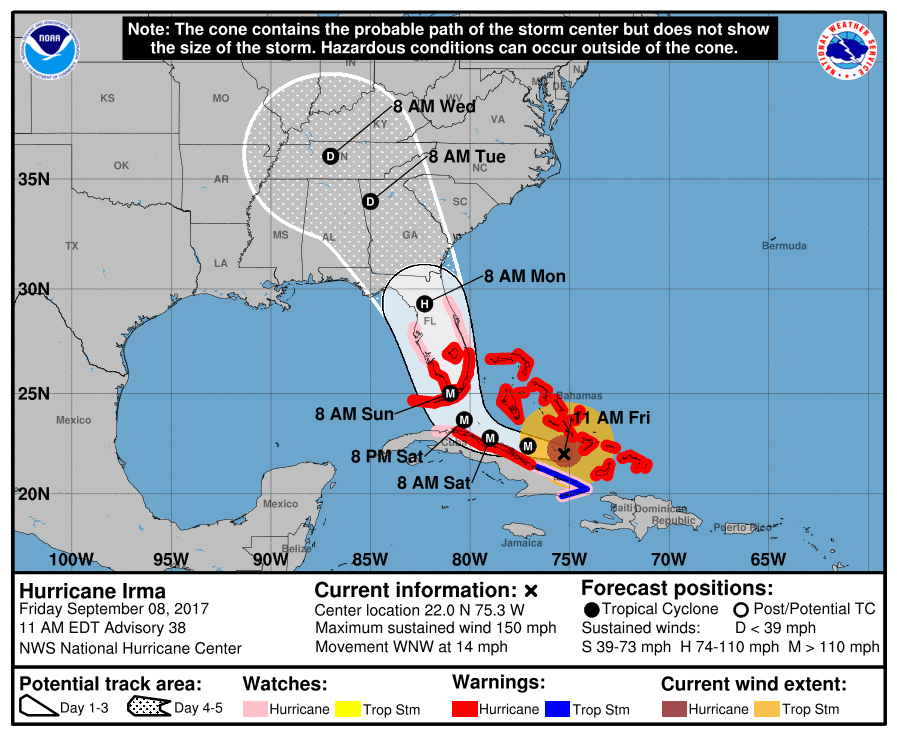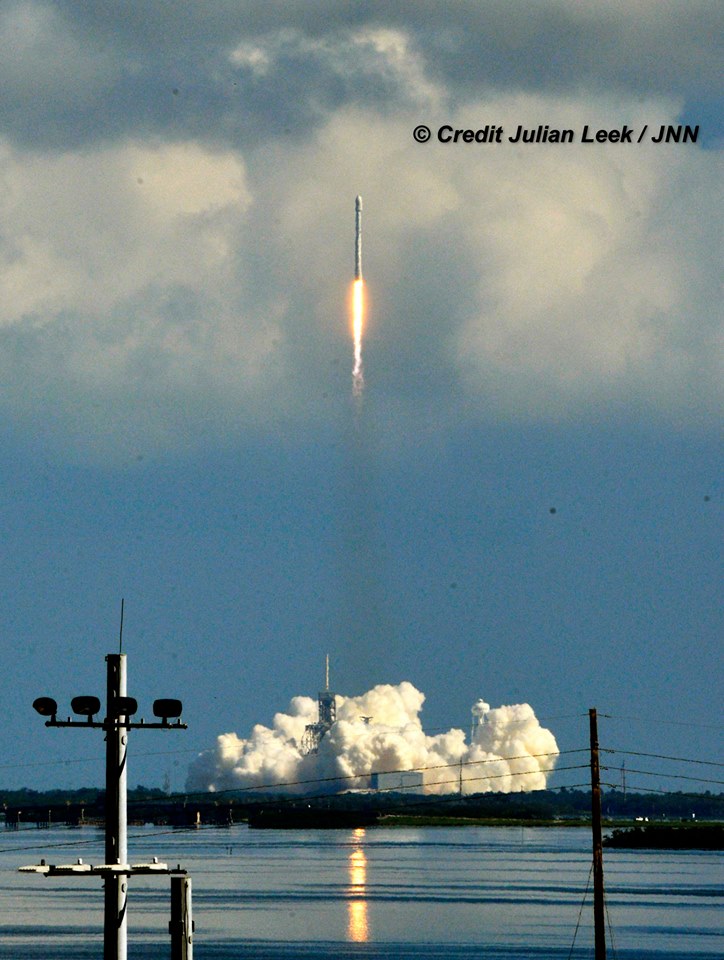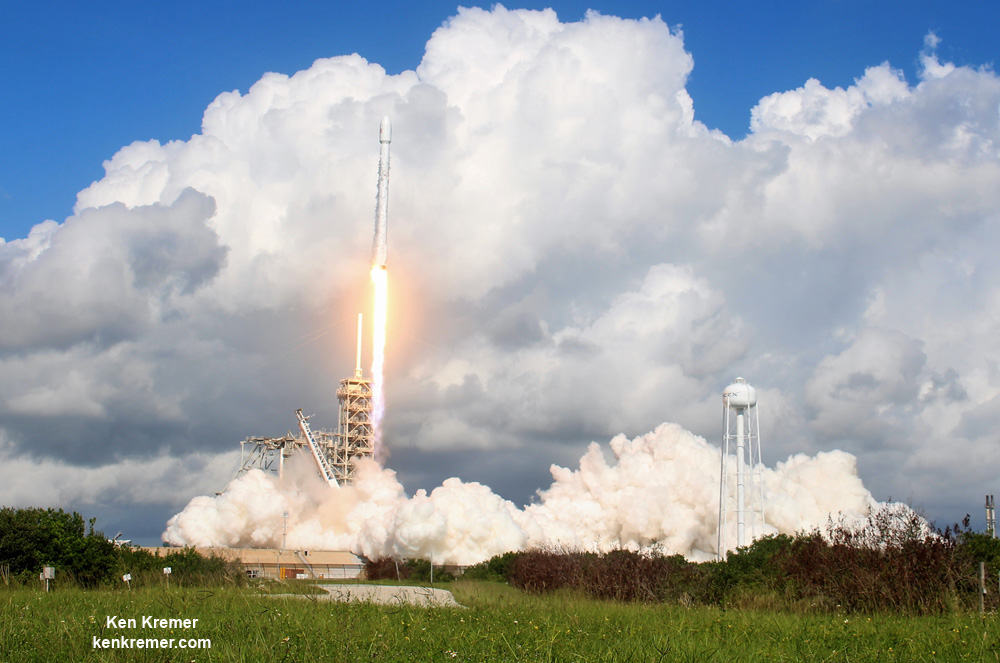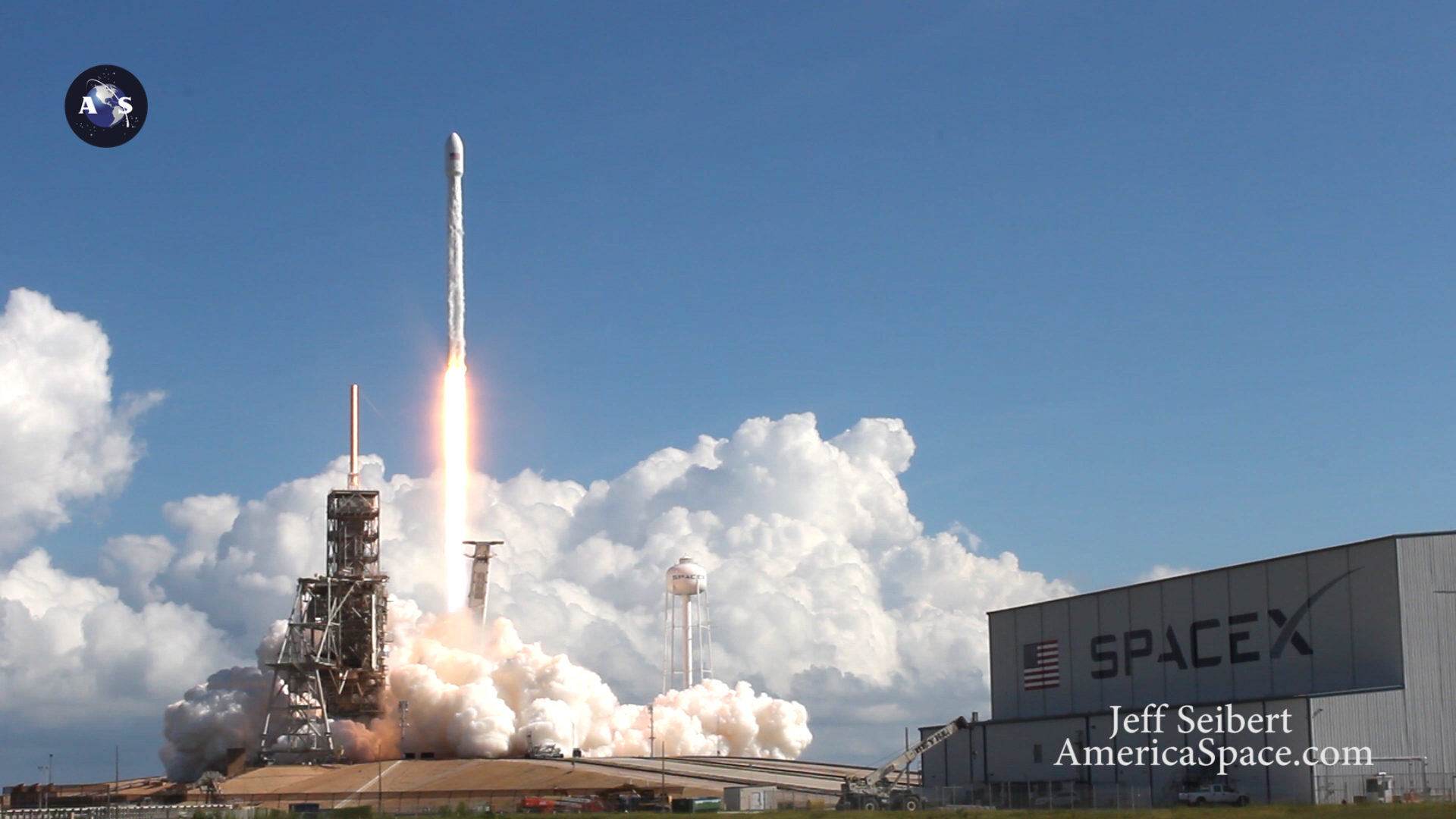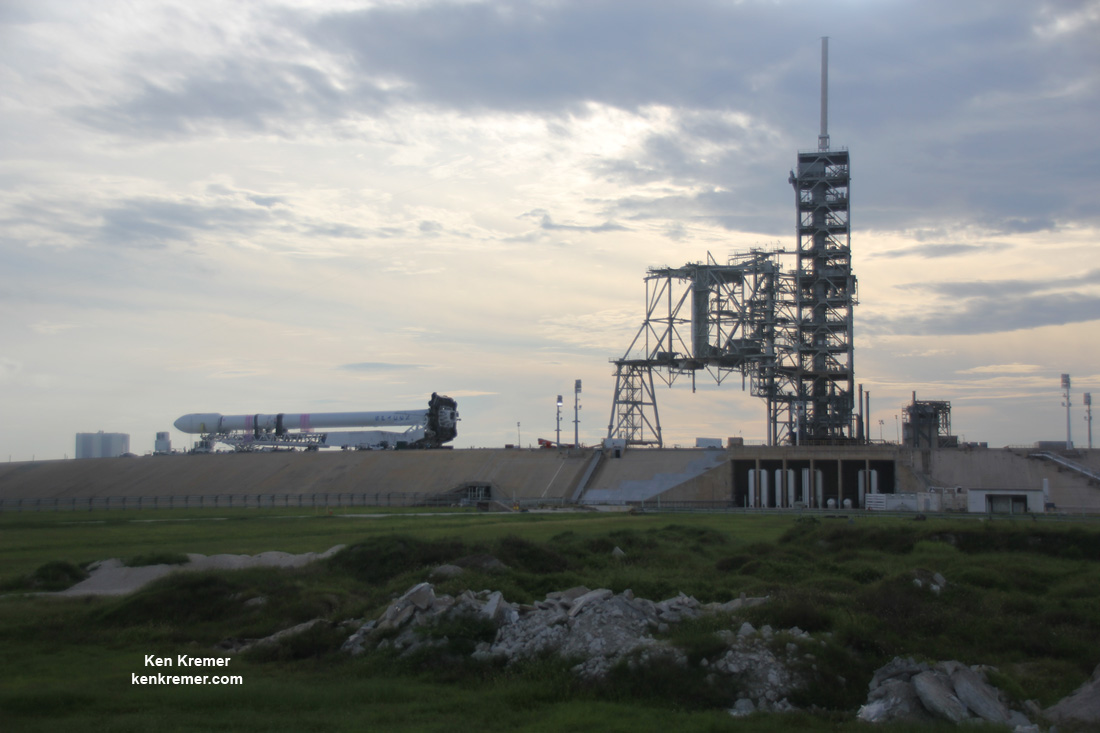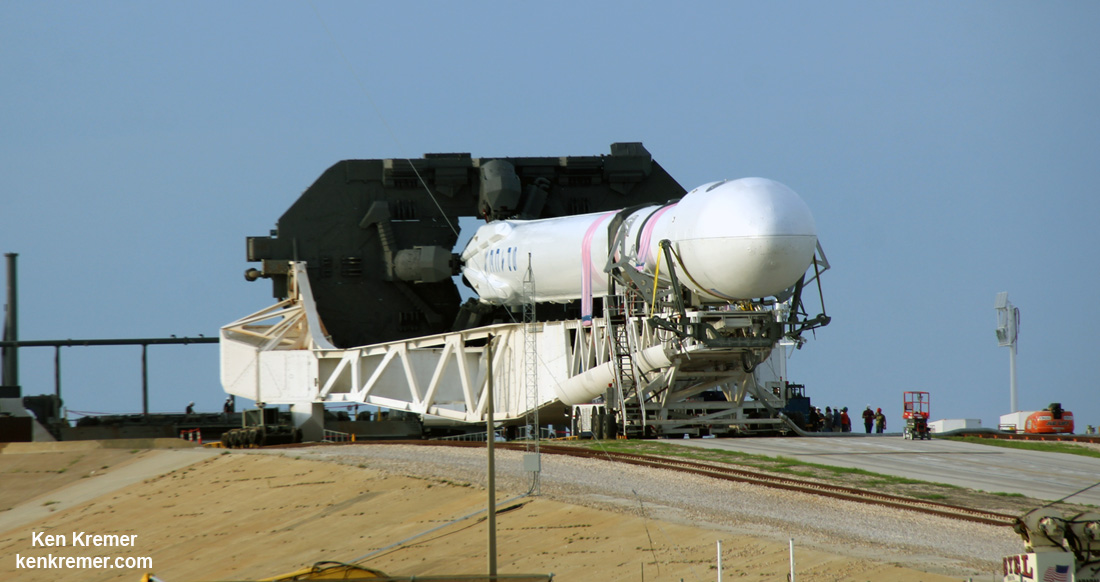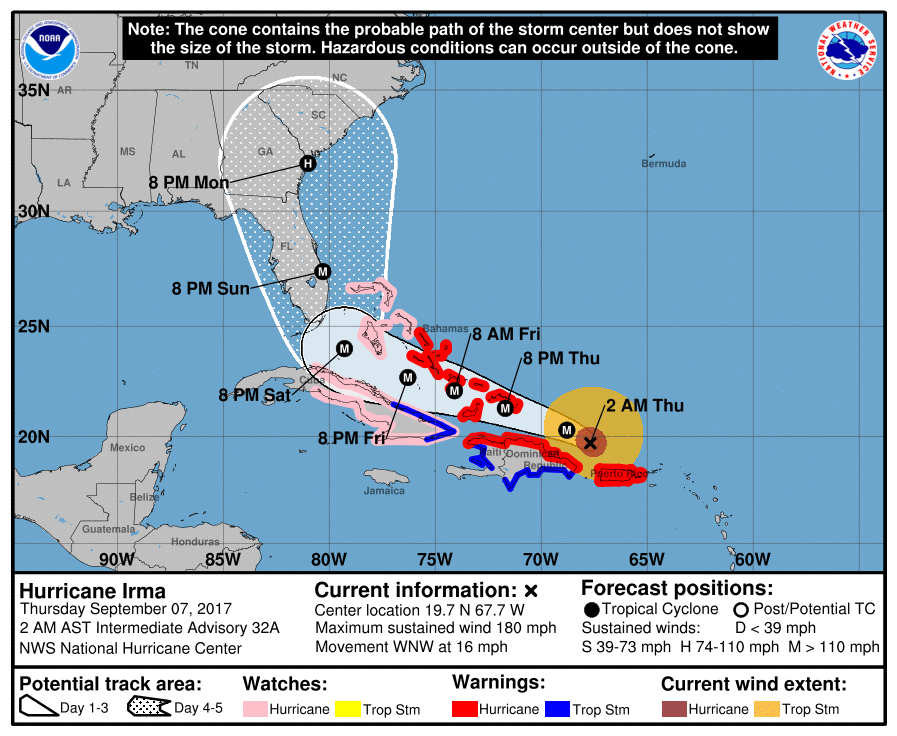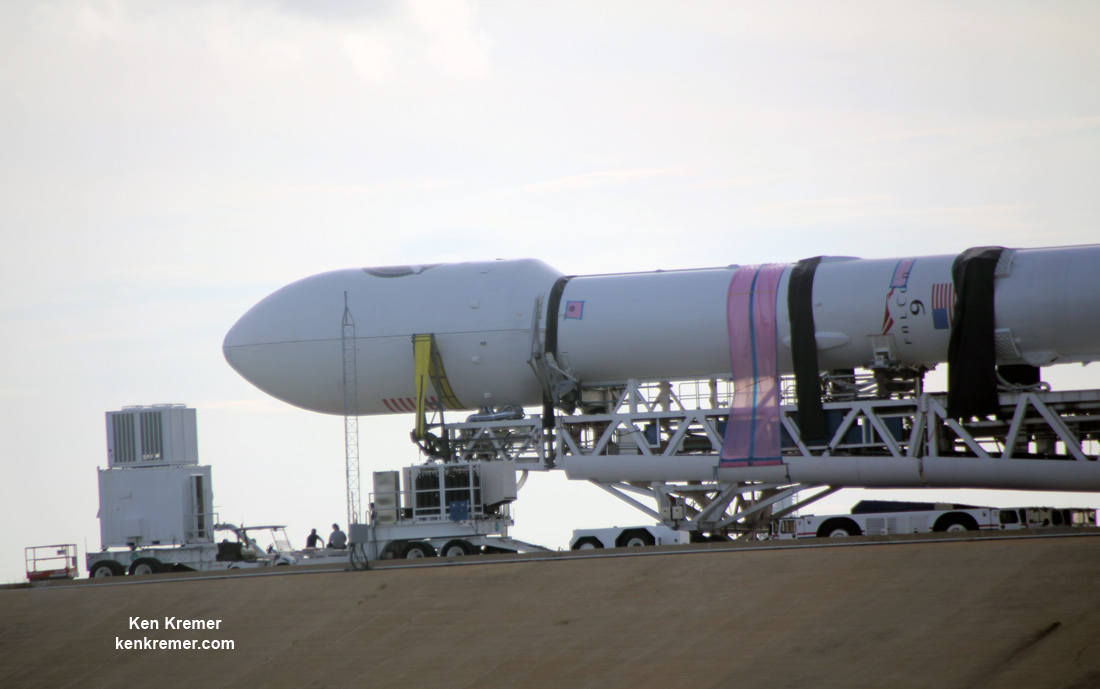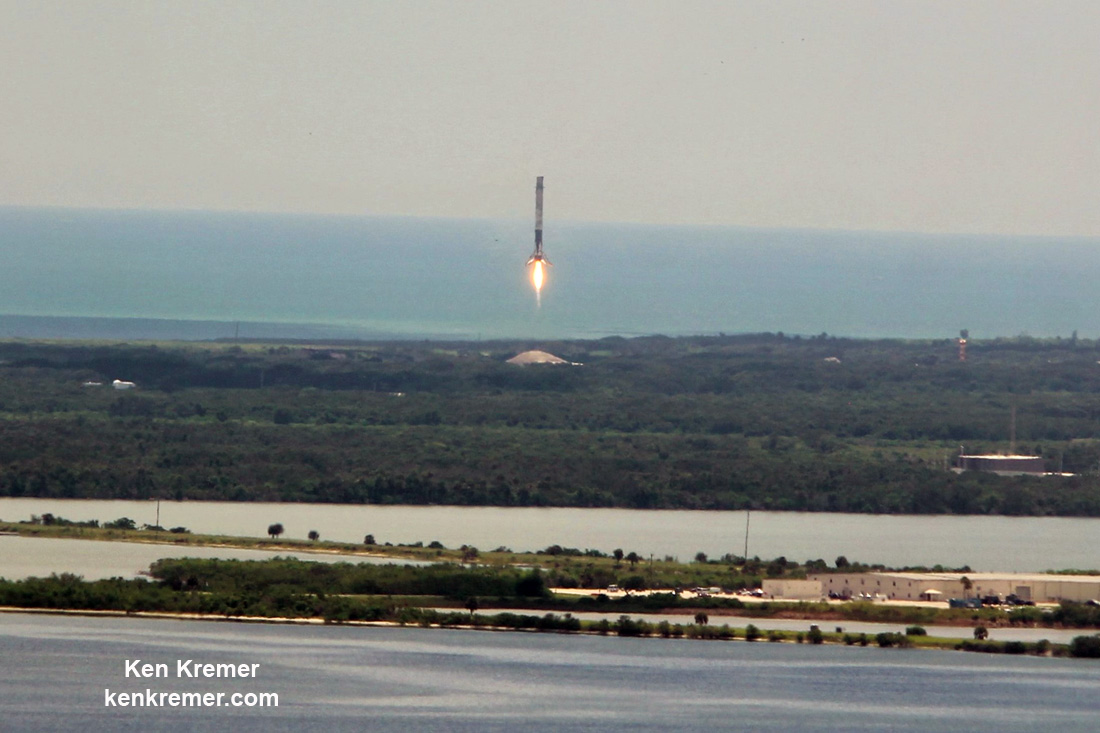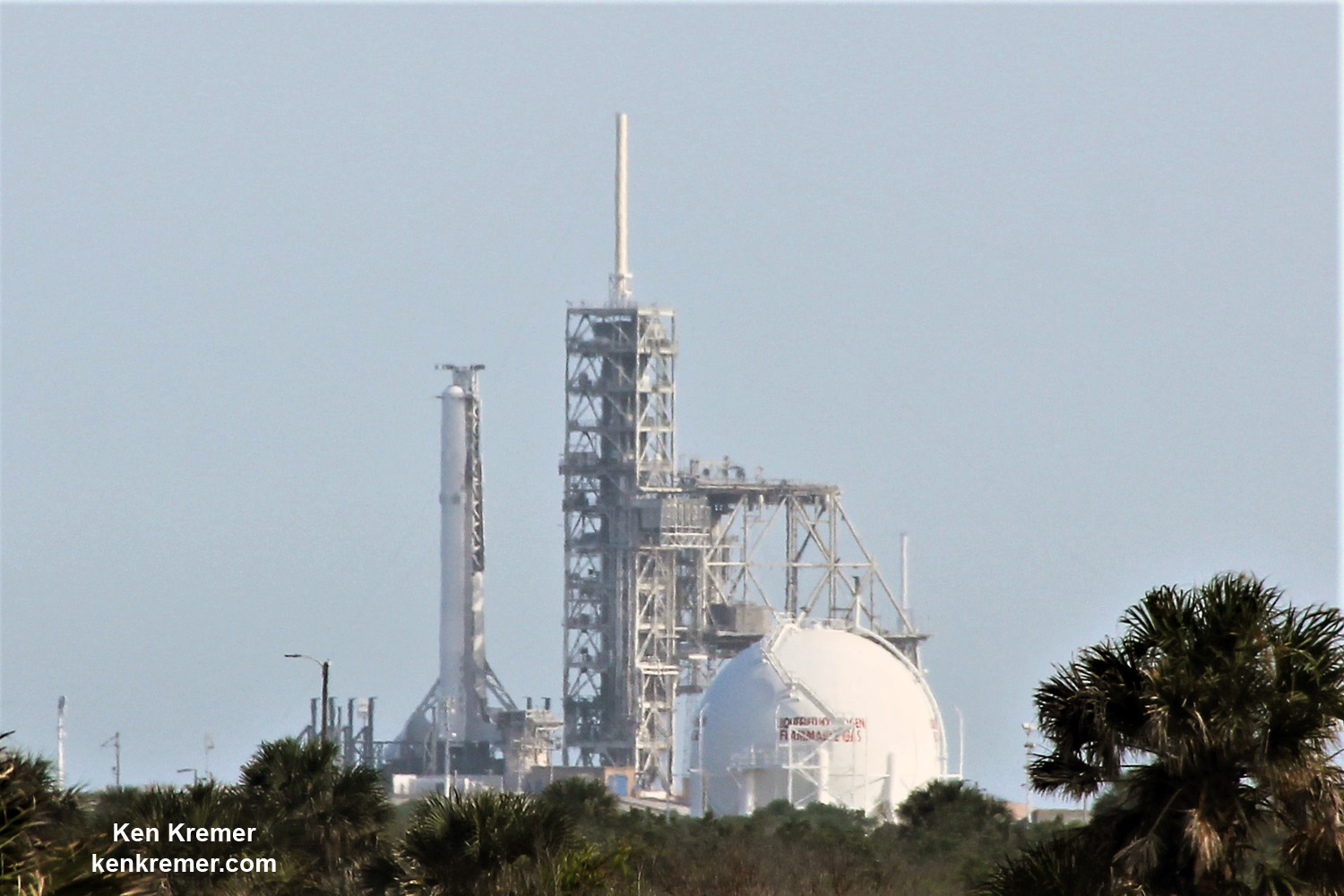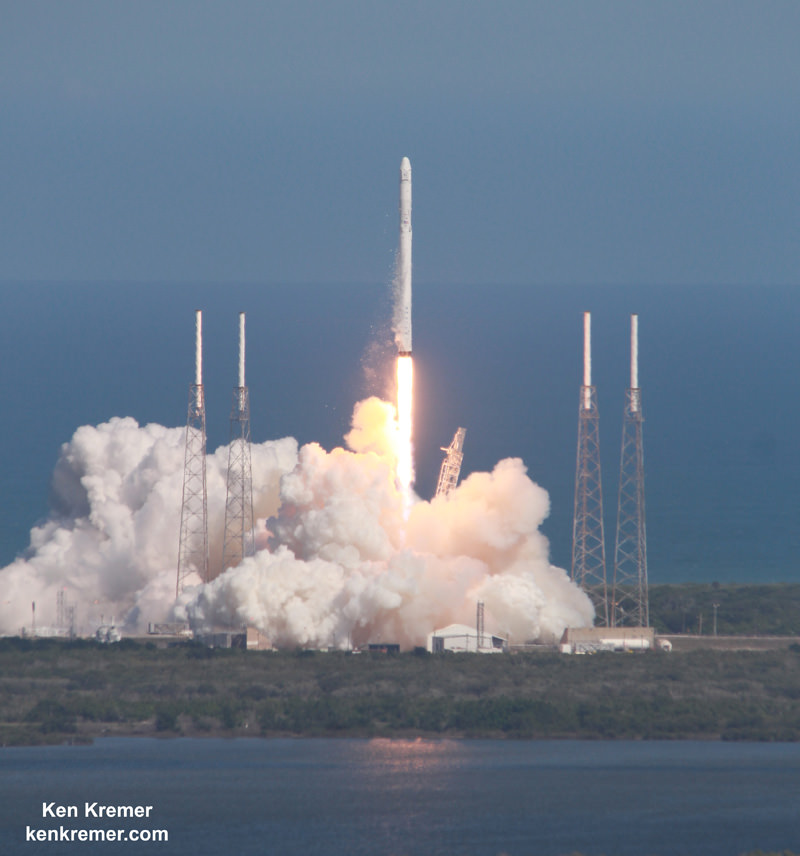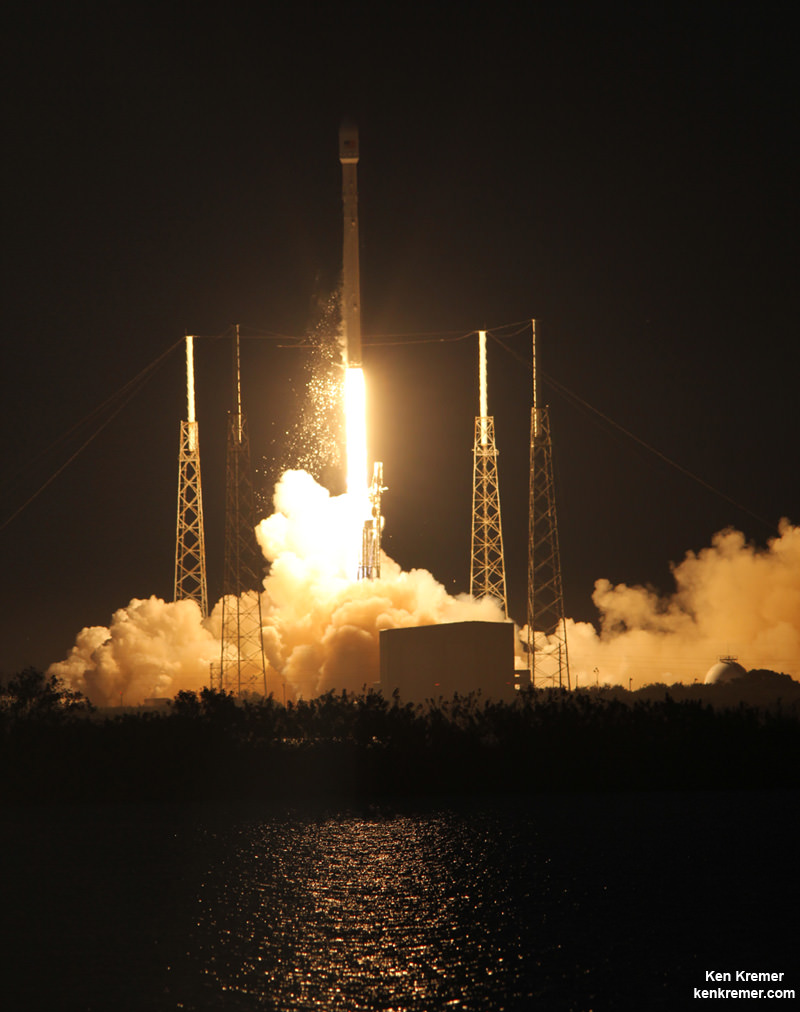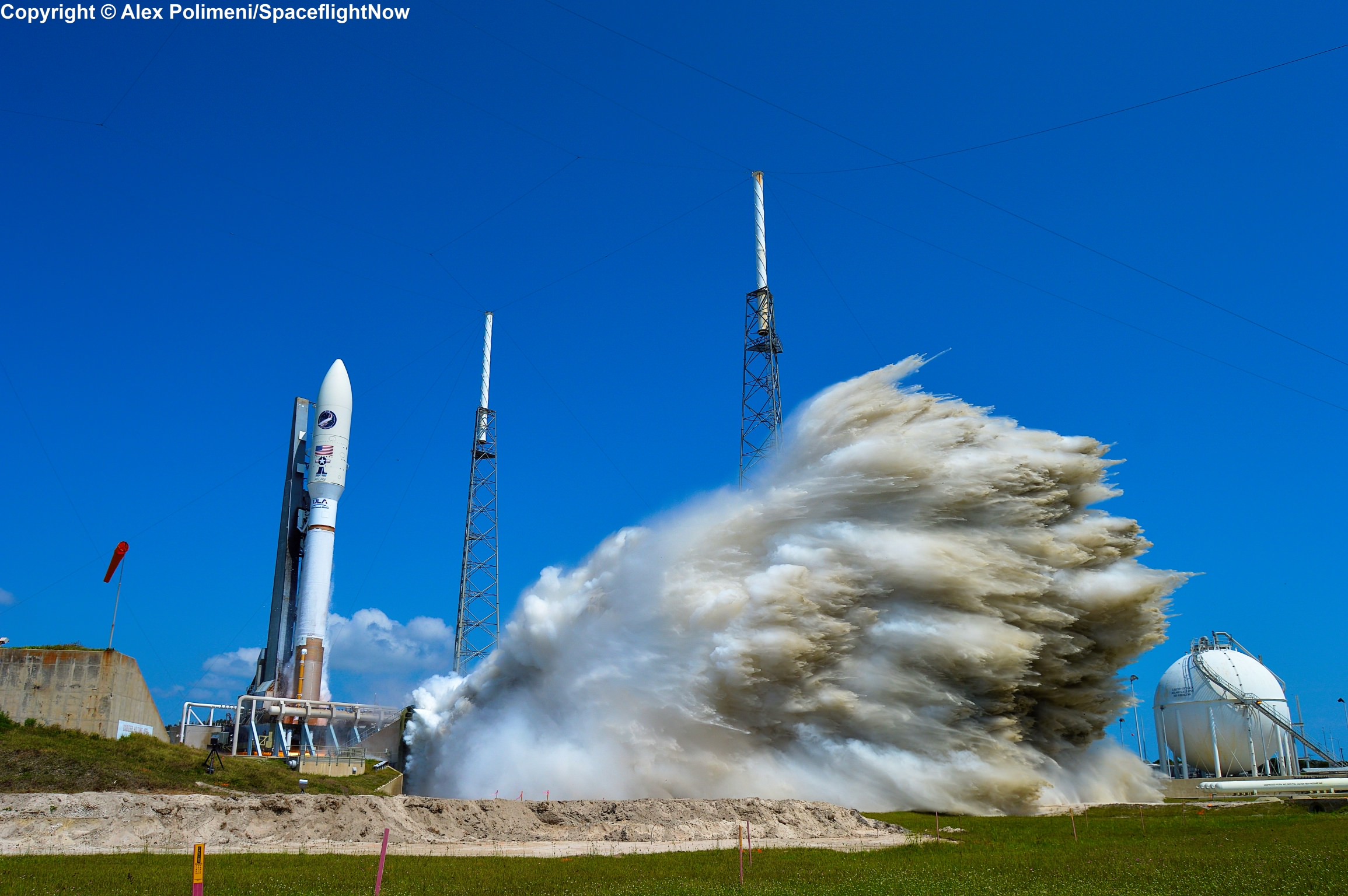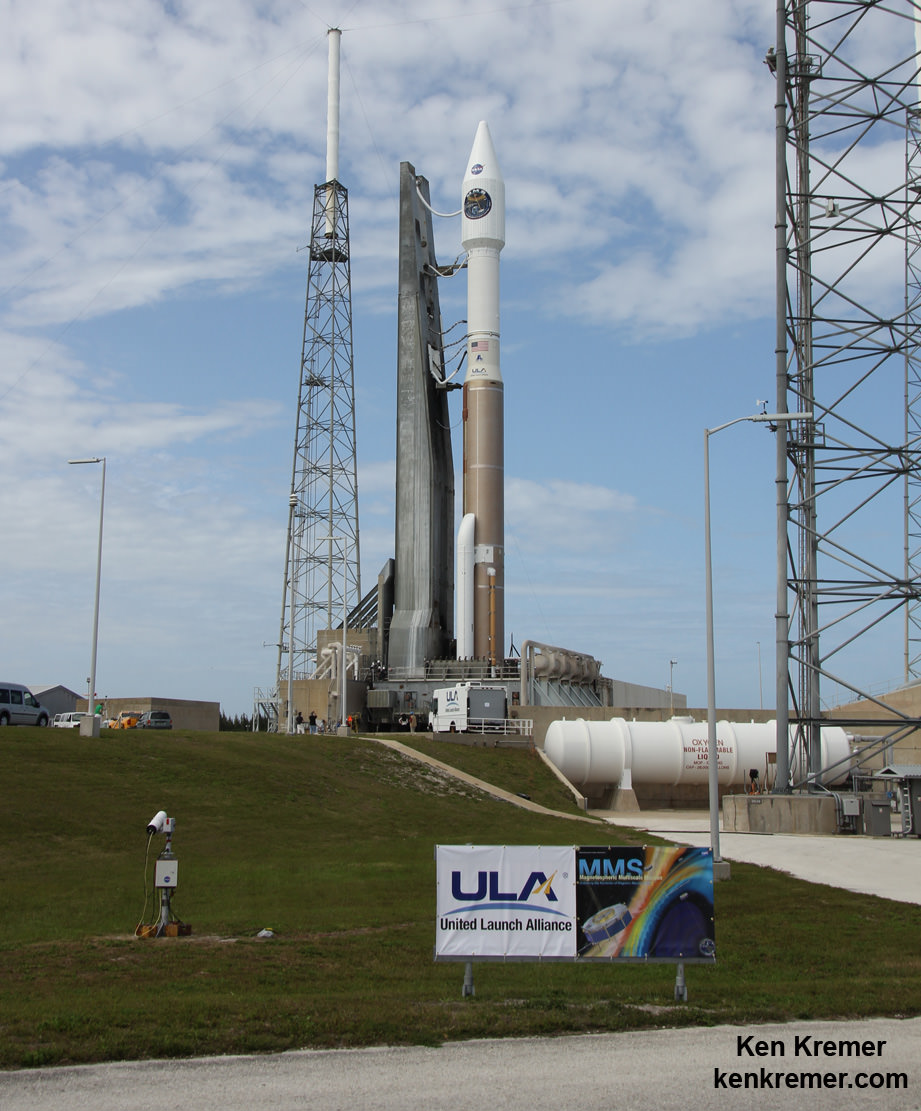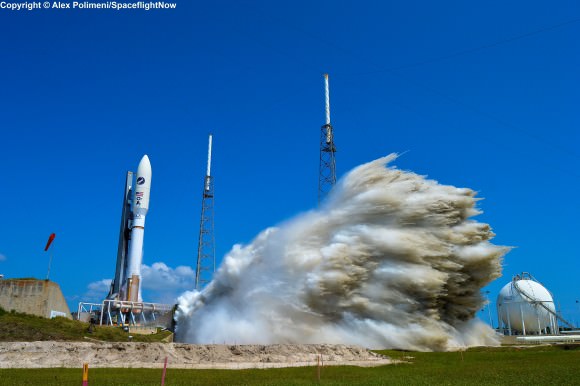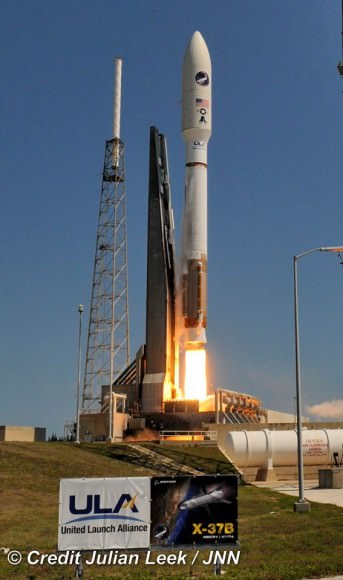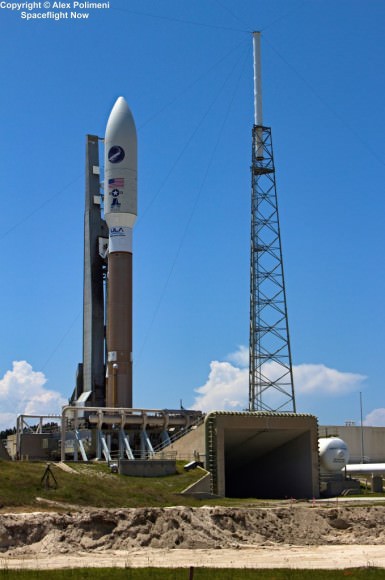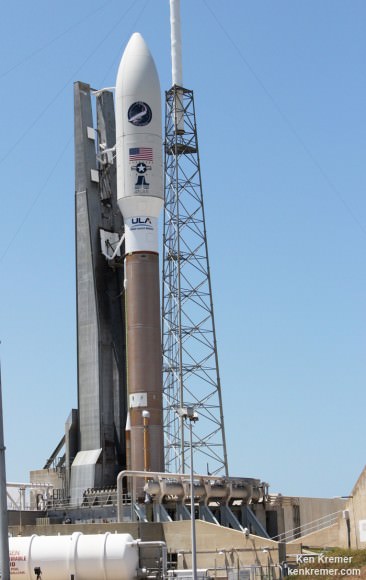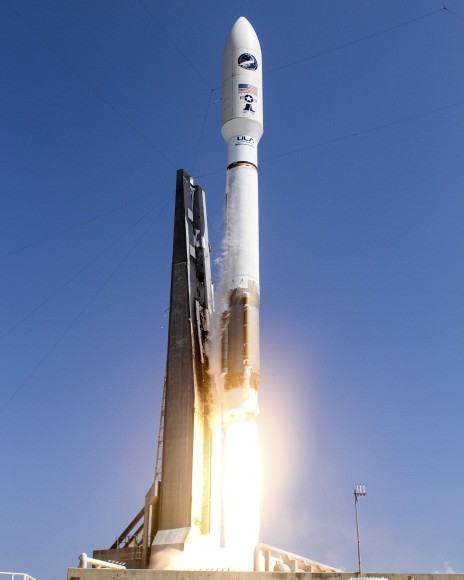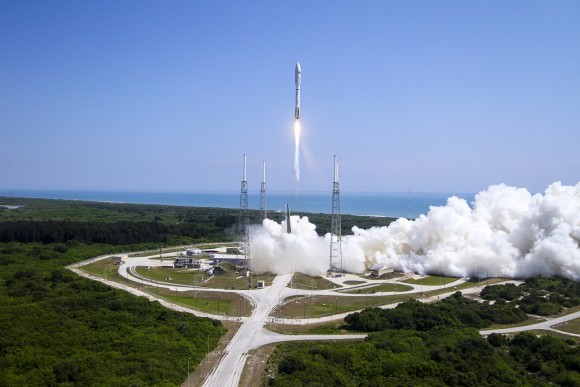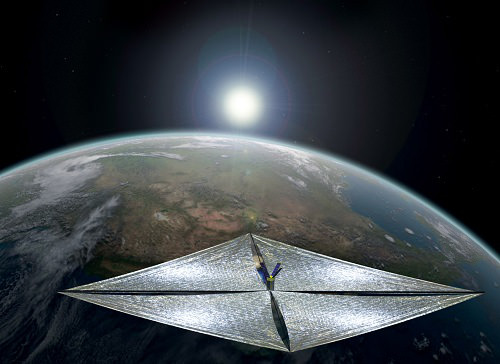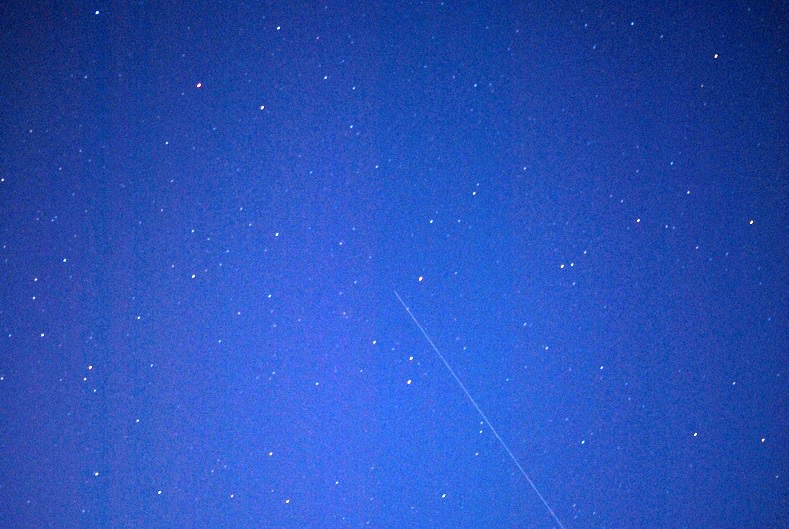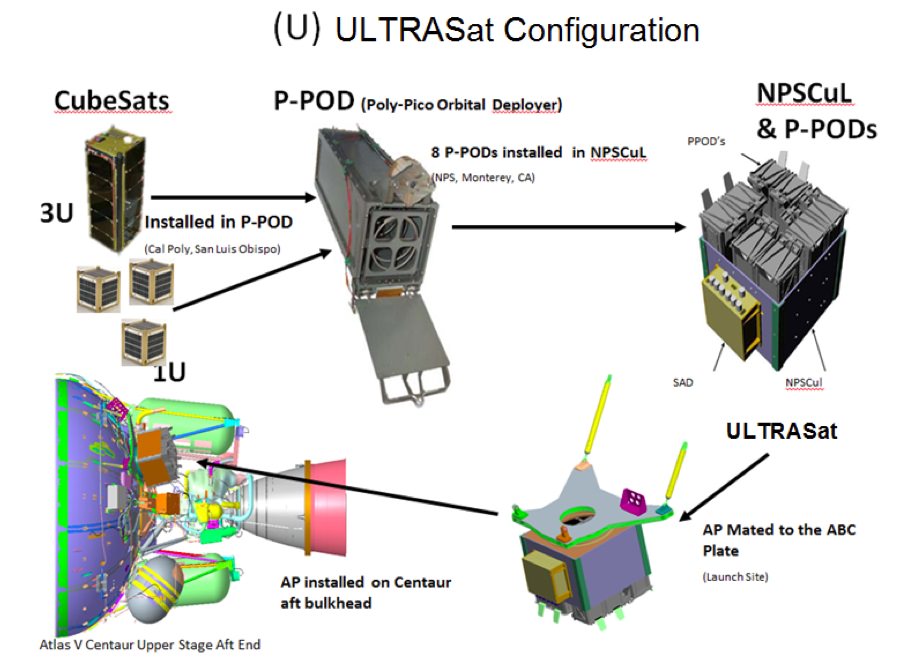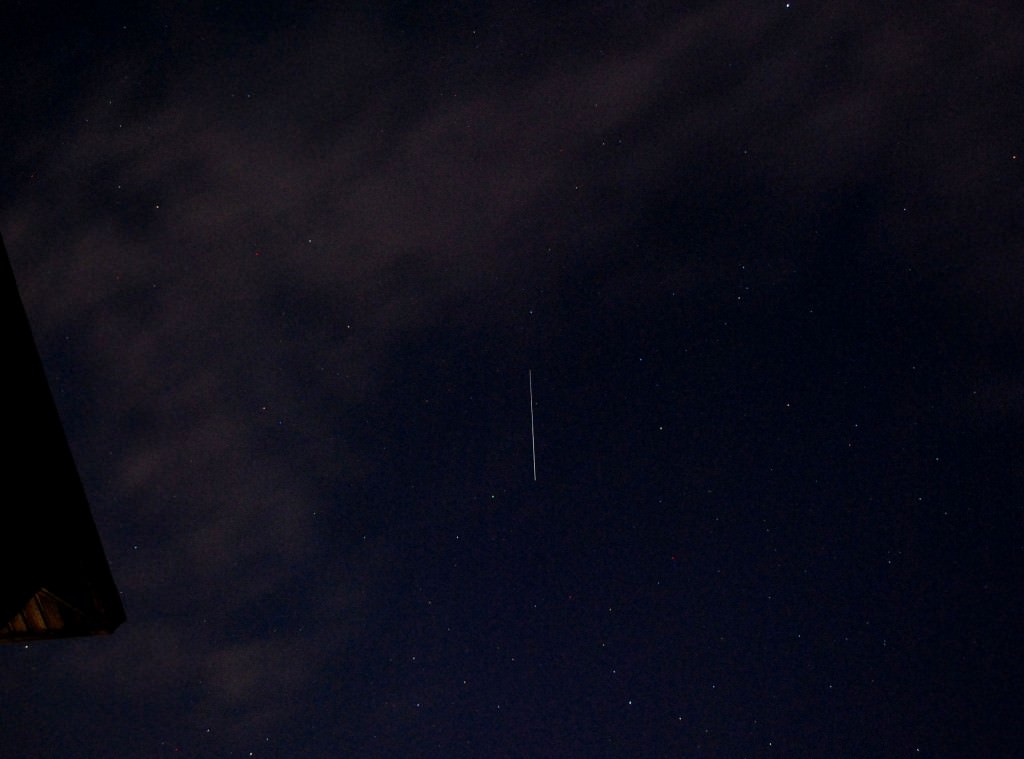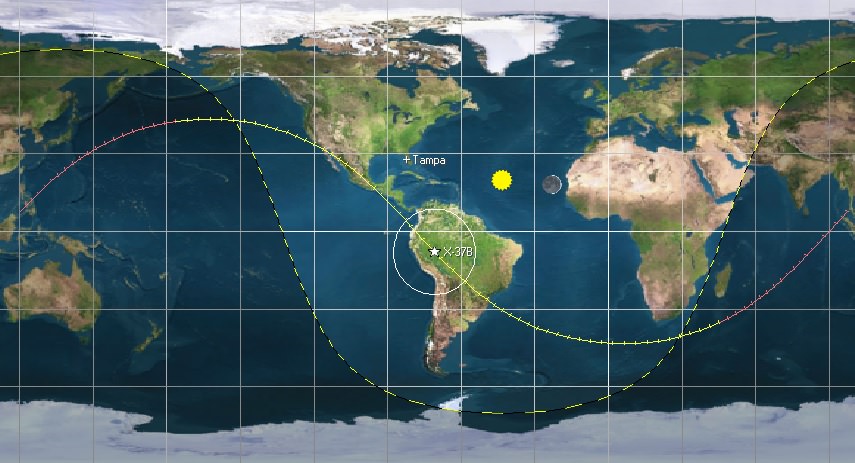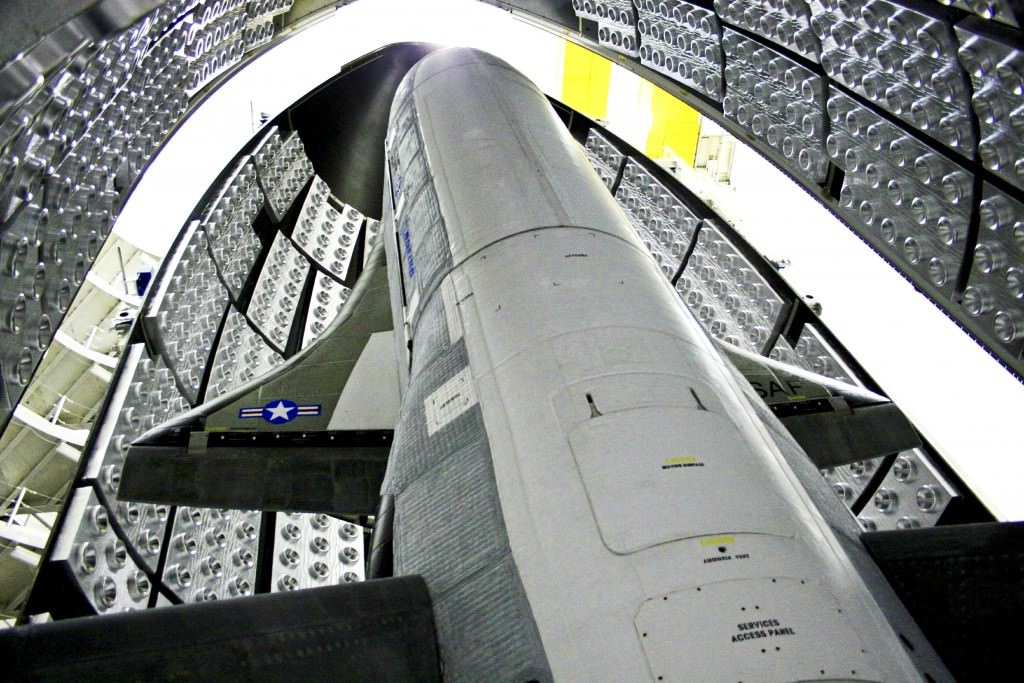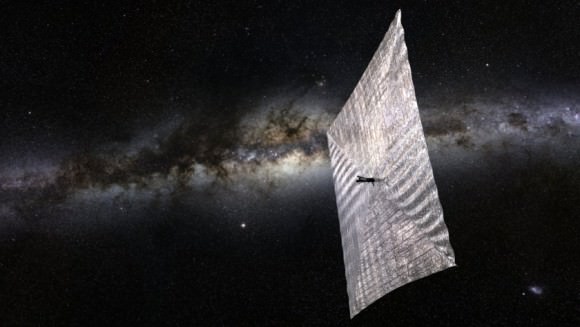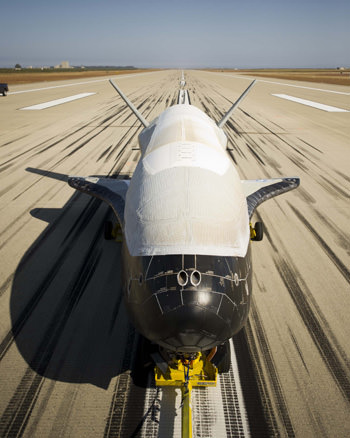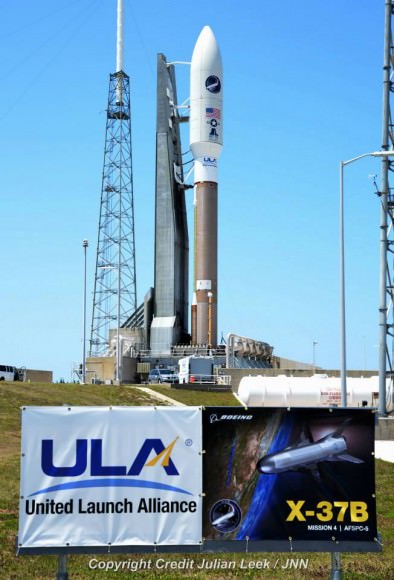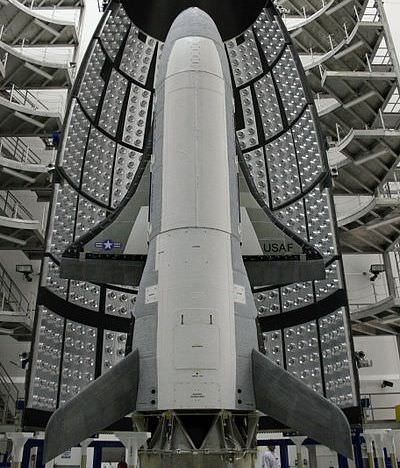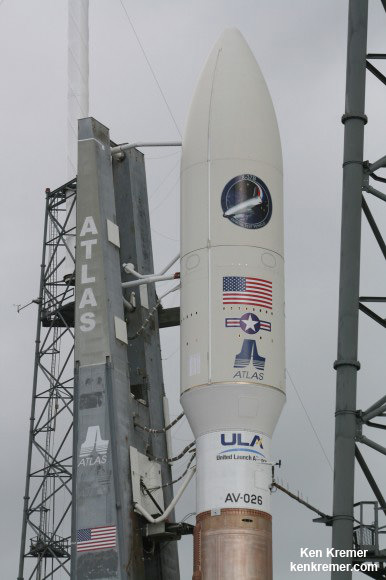
KENNEDY SPACE CENTER, FL – SpaceX is all set for a sunset blastoff Wednesday, Oct. 11 of the commercial SES-11/EchoStar 105 Ultra High Definition (UHD) TV satellite serving North America on a ‘used’ Falcon 9 booster from the Florida Space Coast – that is also targeted to re-land a second time on an sea going platform off shore in the Atlantic.
Spectators should enjoy a spectacular view of the SpaceX Falcon 9 dinnertime launch with a forecast of extremely favorable weather conditions. This comes on the heels of multiple deluges of torrential rain that twice scrubbed last week’s launch of a United Launch Alliance V carrying a USAF spy satellite.
The private SES-11/EchoStar 105 communications satellite mission will launch on a ‘flight-proven’ booster and is slated for a dinnertime liftoff on Oct. 11 at 6:53 p.m. EDT from seaside Launch Complex 39A at NASA’s Kennedy Space Center in Florida, carrying the SES-11.
All systems are GO at L Minus 1 Day!
“#EchoStar105 is targeted for launch Oct. 11 from launch Complex 39A at NASA’s Kennedy Space Center in Florida-launch window 6:53-8:53 PM EDT,” EchoStar tweeted today.
“Getting Echostar-105/#SES11 ready for launch!” SES tweeted further.
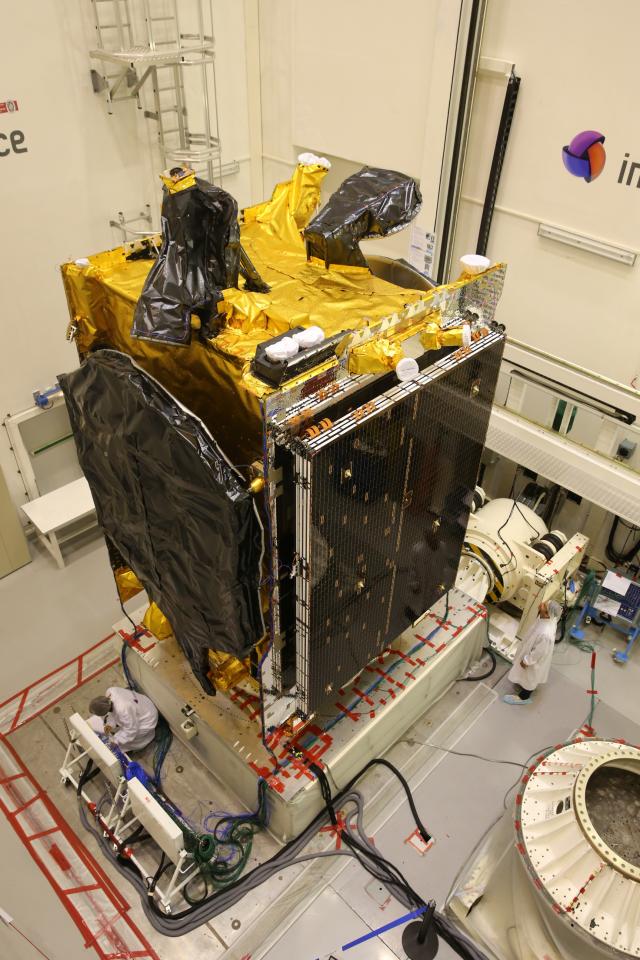
If all goes well this will be the second launch for SpaceX this week following Monday’s Falcon 9 launch from Vandenberg AFB, Ca carrying 10 Iridium-NEXT satellites to orbit – and a record setting 15th of 2017!
EchoStar 105/SES-11 is a high-powered hybrid Ku and C-band communications satellite launching as a dual-mission satellite for US-based operator EchoStar and Luxembourg-based operator SES.
The used two stage 229-foot-tall (70-meter) Falcon 9 rocket was rolled out to pad 39A today, erected to vertical launch position and is now poised for liftoff Wednesday.
It will launch the two and a half ton EchoStar 105/SES-11 to geostationary orbit some 22,000 miles (36,000 kilometers) above the equator.
SpaceX will also attempt to recover this recycled Falcon 9 first stage booster again by soft landing on a droneship platform prepositioned hundreds of miles off shore in the Atlantic Ocean – some 8 minutes after blastoff.
Spectacular weather is expected Wednesday for space enthusiasts gathering in local regional hotels after traveling here from across the globe.
Playalinda Beach is among the best places to witness the launch from – while surfing the waves too – if you’re in the area.
You can watch the launch live on a SpaceX dedicated webcast starting about 10 minutes prior to the 6:53 pm EDT or 10:53 pm UTC liftoff time.
Watch the SpaceX broadcast live at: SpaceX.com/webcast
The two hour long launch window closes at 8:53 p.m. EDT.
The weather outlook is currently exceptional along the Florida Space Coast with a 90% chance of favorable conditions at launch time according to U.S. Air Force meteorologists with the 45th Space Wing Weather Squadron at Patrick Air Force Base. The primary concerns on Oct. 11 are only for Cumulus Clouds.
The odds remain high at 90% favorable for the 24 hour scrub turnaround day on Oct. 12.
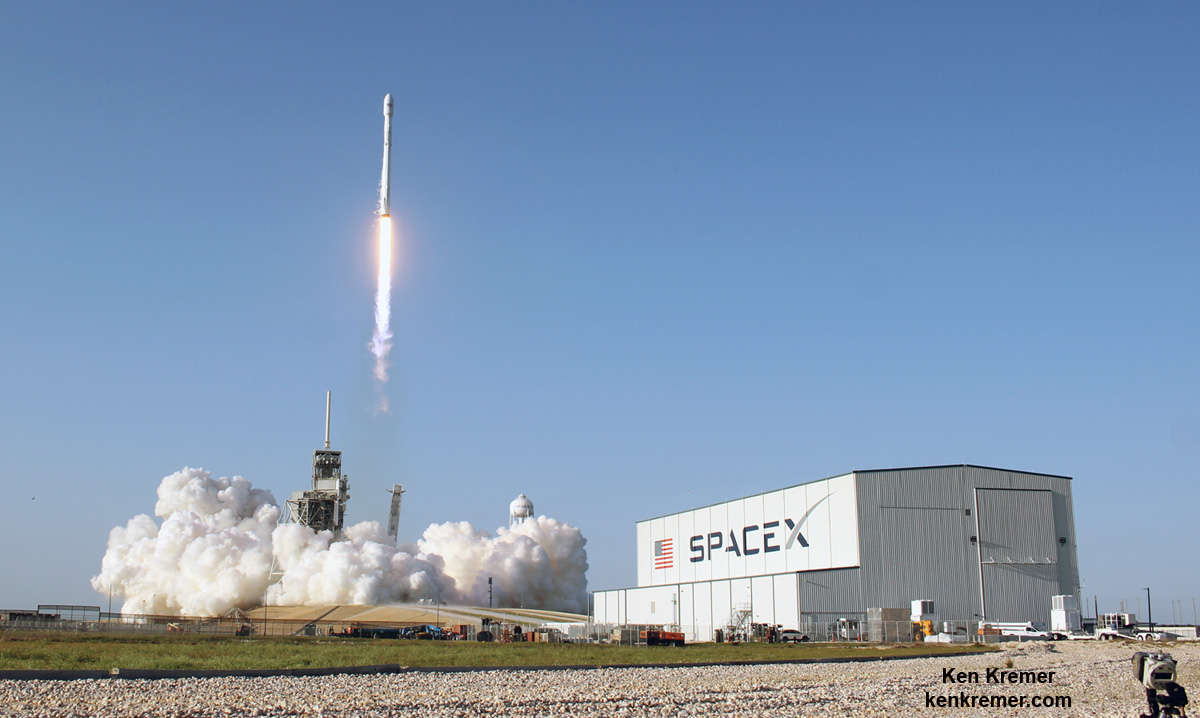
The 45th Space Wing forecast is also favorable for the landing recovery area through Thursday “when a low pressure system may move into the area, increasing winds and seas. This low will migrate west and possibly impact Florida by the weekend.”
After the 156 foot tall first stage booster complets its primary mission task, SpaceX engineers seek to guide it to a second landing on the tiny OCISLY drone ship for a soft touchdown some eight and a half minutes after liftoff.
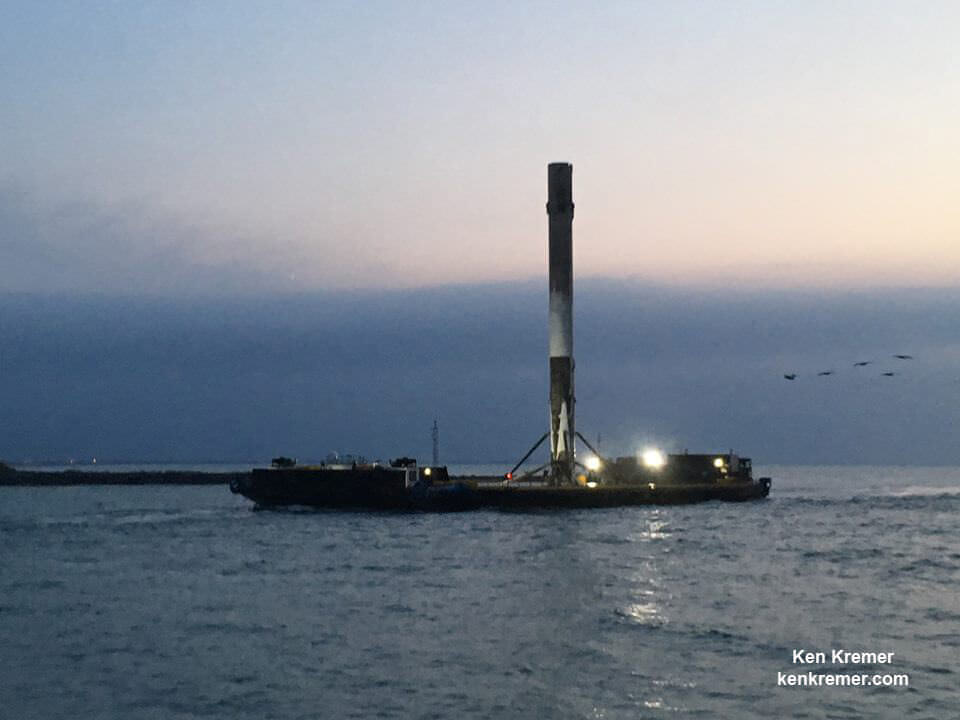
OCISLY or “Of Course I Still Love You” left Port Canaveral several days ahead of the planned Oct. 11 launch and is prepositioned in the Atlantic Ocean some 400 miles (600 km) off the US East coast, just waiting for the boosters 2nd approach and pinpoint propulsive soft landing.
The EchoStar 105/SES-11 spacecraft was built by Airbus and shipped from the Airbus facilities in Toulouse, France to Cape Canaveral, FL for flight processing.
The satellite is scheduled to be deployed approximately 36 minutes after liftoff.
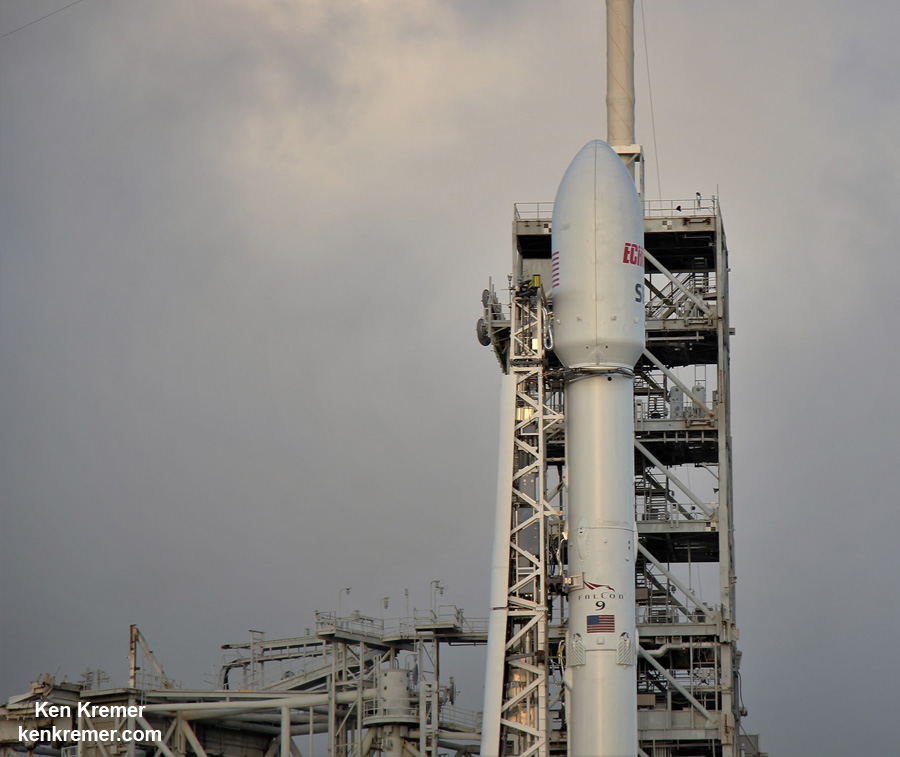
“SES-11 is a high-powered communications satellite designed to especially accelerate the development of the US video neighbourhood, and the delivery of HD and UHD channels. Optimised for digital television delivery, SES-11 joins SES-1 and SES-3 at the centre of its robust North American orbital arc, which reaches more than 100 million TV homes. Together with SES-1 and SES-3, SES-11 will be utilised for the expansion of the North America Ultra HD platform,” according to SES.
“SES-11 offers comprehensive coverage over North America, including Hawaii, Mexico and the Caribbean, and will also empower businesses and governments to capture new opportunities and expand their reach across the region.”
The path to launch was cleared following last weeks successful static fire test of the first stage engines Falcon 9.
During the Oct. 2 static fire test, the rocket’s first and second stages were fueled with liquid oxygen and RP-1 propellants like an actual launch, and a simulated countdown was carried out to the point of a brief engine ignition.
The hold down engine test with the erected rocket involved the ignition of all nine Merlin 1D first stage engines generating some 1.7 million pounds of thrust at pad 39A while the two stage rocket was restrained on the pad – minus the expensive payload.

Following the hot fire test, the rocket was rolled back to the processing hangar located just outside the pad perimeter fence.
The 5,200 kg (11,500 pounds) satellite encapsulated inside the payload fairing was then integrated with the Falcon 9 rocket.
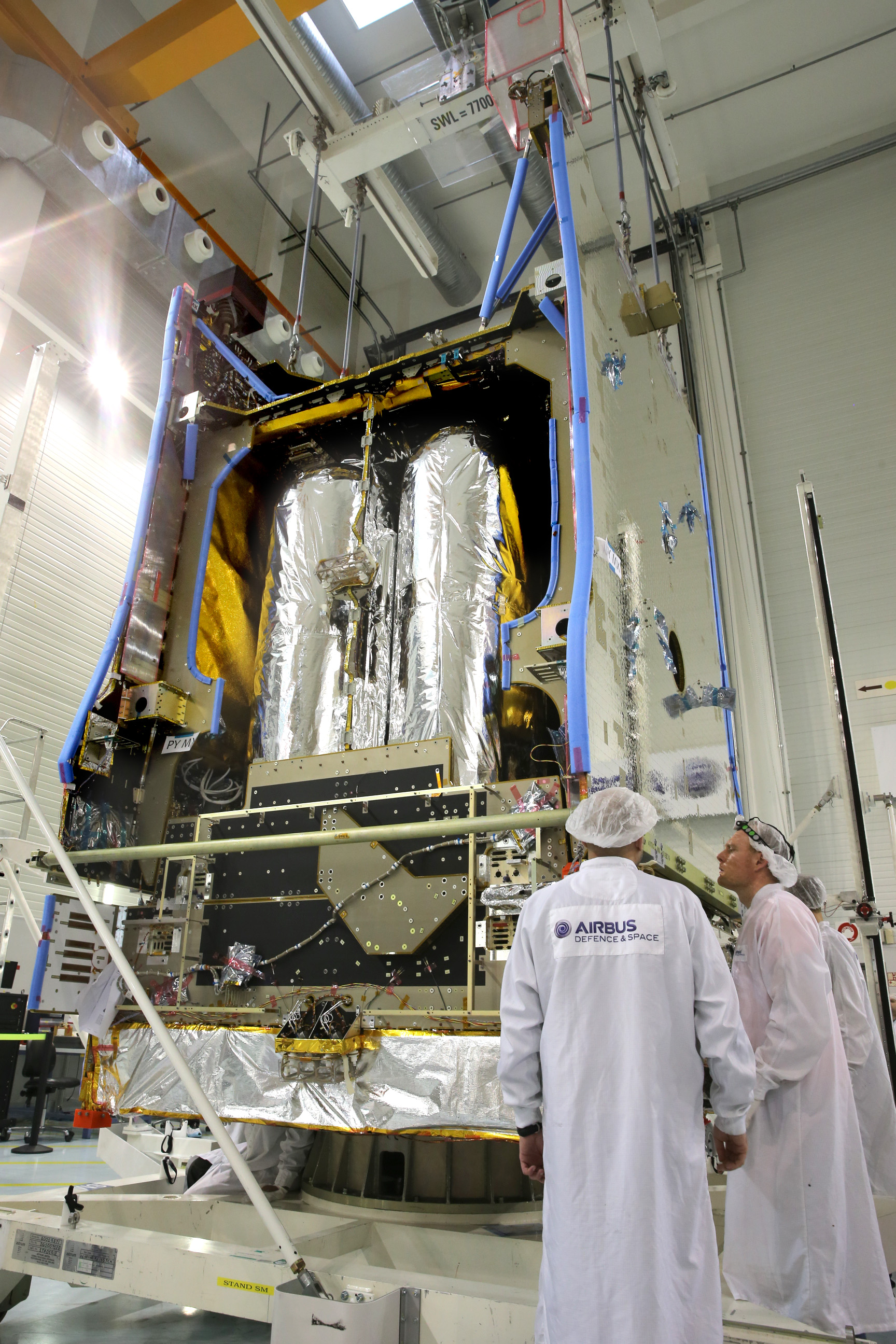
This is only the third recycled SpaceX Falcon 9 ever to be launched from Pad 39A.
SES was the first company to ever fly a payload on a ‘flight-proven’ Falcon 9. The SES-10 satellite lifted off successfully this spring on March 30, 2017.
The second reflown booster successfully launched the BulgariaSat-1 a few months later.
This Falcon 9 booster previously flew on SpaceX’s 10th resupply mission to the International Space Station (CRS-10) in February of this year and made a ground landing at the Cape at LZ-1.
Pad 39A has been repurposed by SpaceX from its days as a NASA shuttle launch pad.
The last SpaceX Falcon 9 launch from KSC took place on Sept. 7 carrying the USAF X-37B military space plane to orbit just ahead of Hurricane Irma.
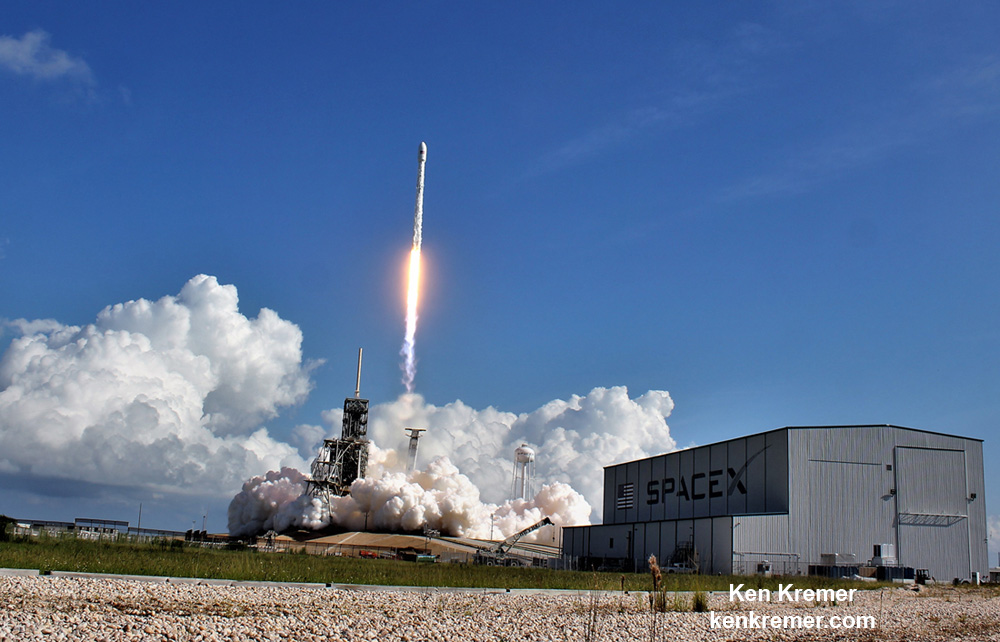
Watch for Ken’s continuing onsite coverage of SpaceX SES-11, ULA NROL-52 and NASA and space mission reports direct from the Kennedy Space Center and Cape Canaveral Air Force Station, Florida.
Stay tuned here for Ken’s continuing Earth and Planetary science and human spaceflight news.
